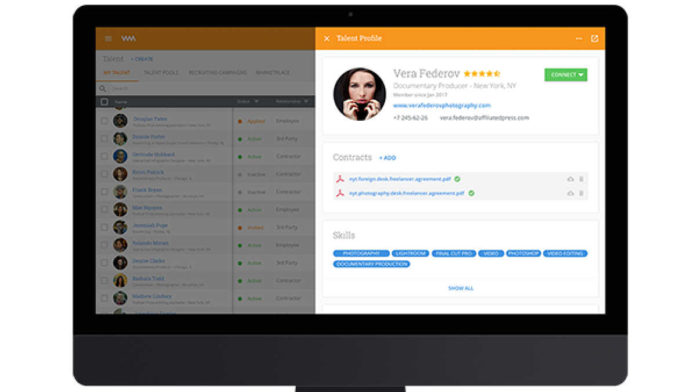
ADP launched new features to its WorkMarket platform with the idea of helping businesses organize, manage and pay their extended workforce.
ADP said companies using freelancers, 1099 contractors and contingent workers need the ability to manage their workflows from a single dashboard. WorkMarket provides that, along with enhanced functionality on dashboards that help clients track metrics for their business KPIs such as operations, budget management, staff forecasting, employee and talent insights and payment reconciliation.
.@ADP launched new features to its @WorkMarket platform with the idea of helping businesses organize, manage and pay their extended workforce. #HR #HRTech Share on XWhen employers are looking for talent, WorkMarket helps managers identify workers and verify their credentials. A geographic heat map lets users view the going rates for services and the location of workers in different parts of the country. Once workers are contracted, WorkMarket can onboard and organize the extended workforce into simple groups, or “Labor Clouds.” Those help managers track skills, locations and experience. The system can also track operational metrics, such as the time allocated to complete an assignment.
More Data, More Knowledge
WorkMarket is mobile-enabled, ADP said, with apps for Android and iOS devices available that let companies collaborate with workers across the country, in real time. Workers can use the app to sign up and complete profiles that list their skills and credentials. Once set up, they can use the app to accept assignments, start engagements and submit proof of completion.
Meanwhile, managers can use the desktop version to set rules for how contingent workers engage with them and to establish requirements around contracts, insurance, work frequency and other nuts and bolts.
When assignments are completed, WorkMarket assists with the distribution of payments through ACH deposit, credit card or wire transfer.
Last year, a study by the ADP Research Institute said technology’s advance is transforming why, where and when people work as much as it’s impacting how they work. Among other things, this indicates that the spread of contingent work is taking on a more structural aspect than many employers may have realized.
These workers usually fall outside of HR’s bailiwick. In terms of administration, they’re often hired and overseen directly by line managers or provided by staffing vendors who’ve negotiated an agreement with Procurement.
In terms of issues such as culture and engagement, gig workers are likely to be left out of social events (like holiday parties) and given less, if any, attention in areas such as communications. Also, ADP noted, gig workers are often paid through a variety of channels – such as accounts payable, payroll or a staffing agency – which makes it difficult to track their overall cost.
Image: ADP WorkMarket













